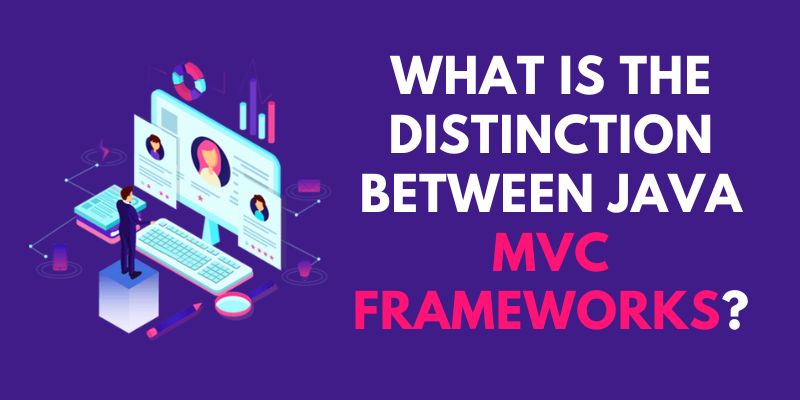Web frameworks vary greatly and are routinely designed for a number of reasons and purposes. Which Java web framework would you use for your next project, and why? This comparison of Java MVC frameworks will save you the time and effort of comparing them all. Other criteria, such as the type of web app you are developing, may have an impact on your decision. To learn more about Informatica development, join the MVC Training In Chennai at FITA Academy, which will provide you with a diverse skill set and the best Placement Training.
This blog will explain What is the Distinction Between Java MVC Frameworks.
What is an MVC Framework in Java?
An MVC framework follows the Model-View-Controller pattern. The three “layers” of an MVC framework isolate the user interface from the application logic. This is done to differentiate between how information is represented internally and how it is presented to the user. It is a well-known web framework supporting several computer languages, including Java.
Why Do We Need Web Frameworks?
It takes work to create visually appealing web applications in Java. To put it simply, it stinks. It can be difficult and rarely results in the rich front end we want to provide to pleased users. This is the driving force behind the development of Web Frameworks. Both functional and non-functional web app requirements forced the development of many web frameworks, but this takes us to the opposite problem. With many options available, which web framework should you choose for your next web app?
We wanted to explore these eight libraries and discover what is essential to developers. We also examined how different frameworks make sense for different use cases rather than just looking at market share and usage.
We’ll evaluate and contrast each Web Framework in this report against each of the mentioned. This report will cover the following Java Web Frameworks (and versions):
- Spring MVC 3.2.3
- Grails 2.2.2
- Vaadin v7.1.1
- GWT 2.5.0
- Wicket 6.8
- Play 2.1.2
- Struts 2.3.15.1
- JSF 2.2
Comparing Java MVC Frameworks
This section compares and contrasts each Web Framework for the following ranking categories.
- Rapid application prototyping
- Framework Complexity
- Ease of Use
1. Rapid Application Prototyping
Whether you’re using a Java MVC framework for the first time or a seasoned pro, it’s critical to create quickly to prototype an idea or simply try new things out. This section evaluates each framework’s ability to create content from scratch and deliver results quickly.
Spring MVC
Spring should not be your first choice if you need a framework to help you create an application quickly and cleanly. Spring Roo, a Spring subproject that supports Spring Framework, Spring Security, and Spring Web Flow, is the convention-over-configuration method for quickly constructing applications. It emphasises Java platform productivity, usability, runtime avoidance, lock-in avoidance, and add-on extensibility. It is currently being enlarged and has a lot of promise.
JSF
JSF could be better for rapid prototyping; code generation isn’t built in, and prototype apps require the same amount of configuration as full applications. This is not JSF’s fault because it is based on the Java EE specification. However, JSF has several functional Maven patterns providing a decent basic application starting point.
Enroll in the MVC Course In Chennai, Which will provide you with more Concepts about MVC Security Benefits.
2. Framework Complexity
Spring MVC
Although the Spring MVC design is straightforward, numerous levels and abstractions can be difficult to debug if something goes wrong. It is also heavily reliant on Spring Core.
Vaadin
The Vaadin Framework is currently based on a slightly modified version of the GWT framework. Constructing a Vaadin project is similar to that of GWT in that you can establish a hierarchy of components. However, mastering GWT is optional to be proficient with Vaadin.
3. Ease of Use
Spring MVC
Spring is extensive, so picking up and using it one day takes work. Spring is designed for severe applications with solid foundations, complex user interfaces, and a RESTful API, making it utterly unneeded for anything much simpler.
Struts
Struts are not the most user-friendly framework. Assume you need to create a new business specification that includes a simple CRUD operation over an entity. You must build actions with potentially varied action outputs, URL mapping/page navigation setups in XML, form bean classes with XML validation configurations, and view templates.
Conclusion
Hopefully, you enjoyed this blog and now understand everything about MVC, including What is the Distinction Between Java MVC Frameworks.
You can gain more expertise and ability in designing dynamic and interactive web applications by studying at the MVC Classes In Chennai at FITA Academy.
Read more: Javascript Interview Questions and Answers
